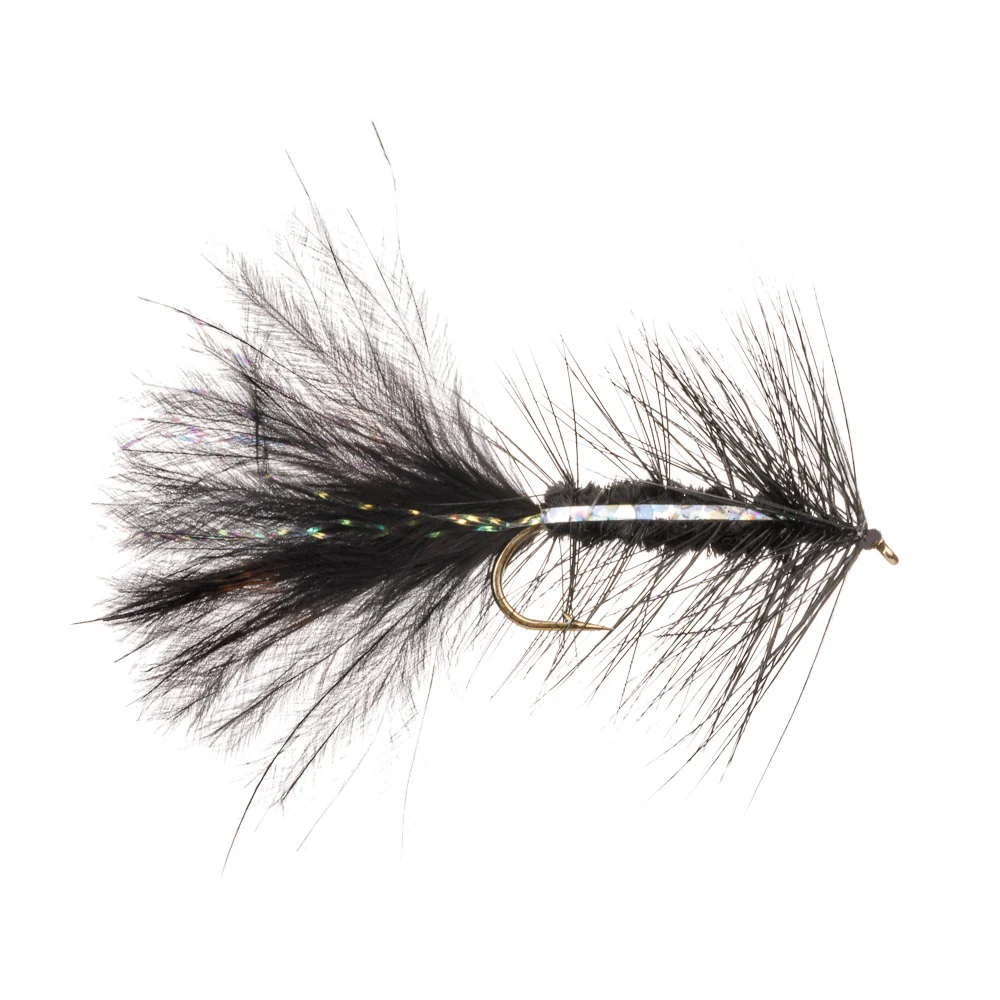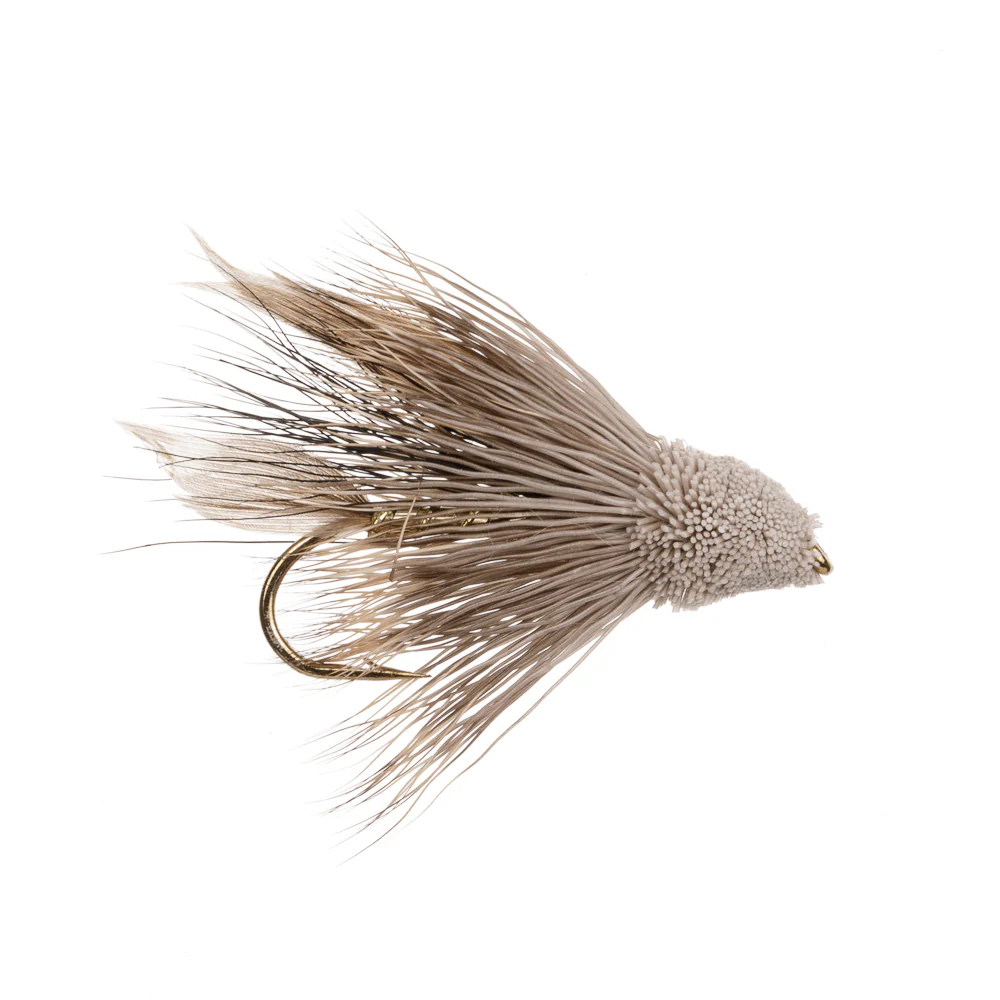October Streamers: Patterns for Hungry Trout in Rivers and Stillwaters
Posted by James on 26th Sep 2025
As the days shorten and water temperatures cool, trout of all kinds shift into feeding mode. October is streamer time, when bigger flies can bring bigger fish. While many anglers picture large Autumn browns smashing streamers in fast water, these patterns are just as effective for stillwater rainbows, blues, and spartics. Whether you’re fishing rivers or reservoirs, the right streamer can unlock some of the most exciting takes of the year.
Streamers in Rivers vs. Stillwaters
Rivers: Streamers here are taken as small fish, sculpins, or leeches being swept along the current. Large browns in particular are territorial and a Woolly Bugger stripped through a seam is as much a threat as it is a meal. Swinging across current, stripping past boulders, or darting near undercut banks are all proven tactics.
Stillwaters: The story shifts slightly. Streamers imitate fry shoals and dragonfly nymphs. Stocked rainbows, blues, and spartics are aggressive by nature, and a flashy Humongous or Zonker often draws a chase. Depth control is critical, fishing an intermediate or sinking line allows you to explore where fish are holding.
Woolly Bugger

Origin: Developed by Russell Blessing in Pennsylvania in 1967. Initially tied to resemble large nymphs and leeches, it quickly became one of the most versatile streamers in fly fishing.
Why it works: A universal impression of life, leeches, fry, dragonfly nymphs and its effective everywhere trout swim.
Hook: Trout Hooks (Size 6–10)
Tail: Marabou
Body: Chenille / Fritz
Hackle: Cock Feathers
Head (optional): Coneheads
River Tip: Strip fast across current seams, most takes will come on the pause.
Stillwater Tip: Use a sink-tip to probe deeper zones where trout herd fry.
Zonker
Origin: First tied in the 1970s in the USA. Rabbit fur strips brought a new level of lifelike movement to streamer design.
Why it works: Rabbit fur pulses and undulates with even the slightest movement making these flies deadly for fry-feeding trout.
Hook: Long Shank Hooks
Tail & Wing: Rabbit Zonker Strips
Body: Flat Tinsel or Fritz
Weight (optional): Lead Wire
River Tip: Cast upstream, mend, and let it swim down naturally.
Stillwater Tip: Long, slow pulls with pauses often trigger savage takes.
Muddler Minnow

Origin: Created by Don Gapen in 1937 to imitate sculpins. The spun deer hair head was groundbreaking at the time.
Why it works: Buoyant and noisy, it pushes current and provokes aggressive strikes.
Hook: Streamer Hooks
Tail: Turkey or Marabou Fibres
Body: Gold Tinsel
Wing: Squirrel Tail
Head: Deer Hair
River Tip: Skate it across the surface at dusk and expect explosive browns.
Stillwater Tip: Retrieve with sharp strips to mimic a fleeing fry.
Humongous
Origin: A British reservoir invention from the 1990s, created with stocked rainbows in mind.
Why it works: Bold, bright, and weighted, its irresistible to stocked fish and resident trout alike.
Hook: Streamer / Long Shank Hooks
Tail: Marabou with Flash
Body: Fritz / Chenille
Rib: Wire
Bead/Head: Gold Beads
River Tip: Try short, snappy retrieves through deep pools.
Stillwater Tip: Fish it on an intermediate line with a steady figure-of-eight retrieve.
Black Ghost
Origin: Created by Herbert Welch in Maine in the 1920s for landlocked salmon, but quickly adopted worldwide for trout.
Why it works: Contrasting colours and slim profile, it is a timeless design that shines in clear water.
Hook: Streamer Hooks
Tail: Yellow Hackle Fibres
Body: Black Floss
Rib: Silver Tinsel
Wing: White Hackle Tips
Throat: Red Hackle Fibres
River Tip: Swing across current seams and lift at the end of the drift.
Stillwater Tip: Let it sink, then lift steadily through the water column.
Quick Autumn Streamer Tips
✅ Lines & Depth: Use sink-tip or fast-sinking lines in deeper stillwaters or heavy autumn flows.
✅ Retrieves: Mix it up, try long pulls, short strips, and steady figure-of-eight retrieves all have their moments.
✅ The Pause: Always pause mid-retrieve. Trout often hit when the fly drops or hesitates.
✅ Timing: Early mornings and late afternoons are prime, more so on bright autumn days.
✅ Mix Colours: Black, olive, and natural tones work in clear conditions; bright or flashy streamers excel after rain or in low light.






